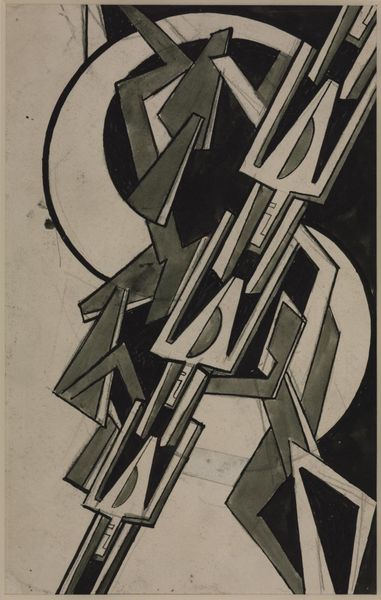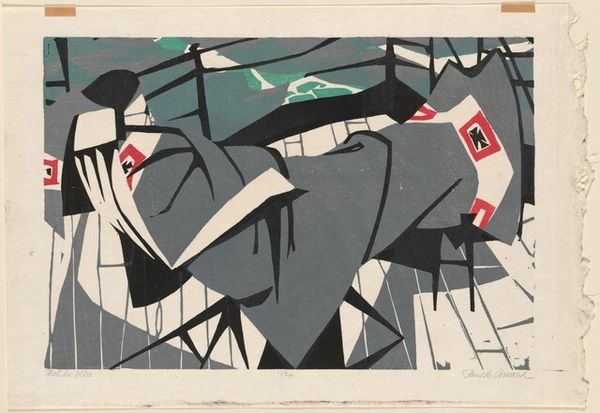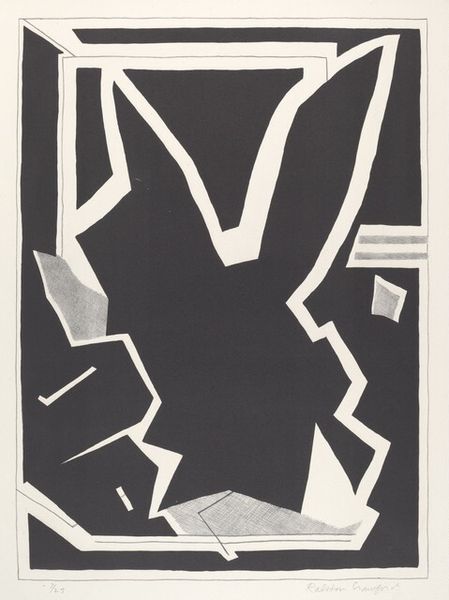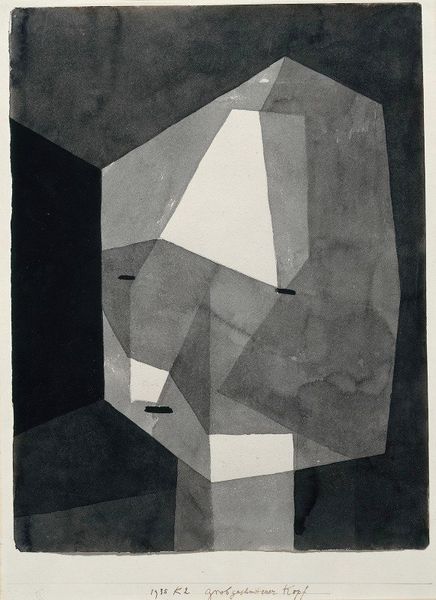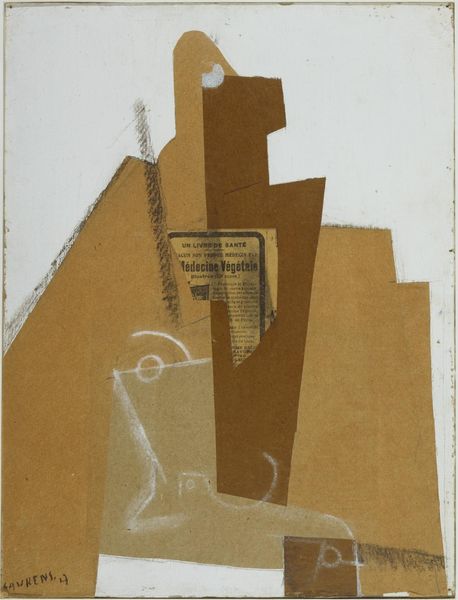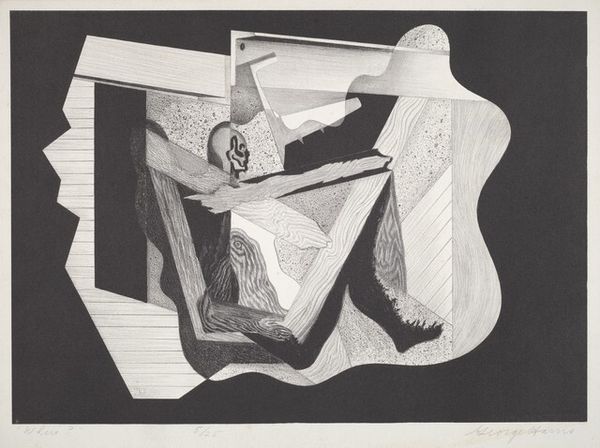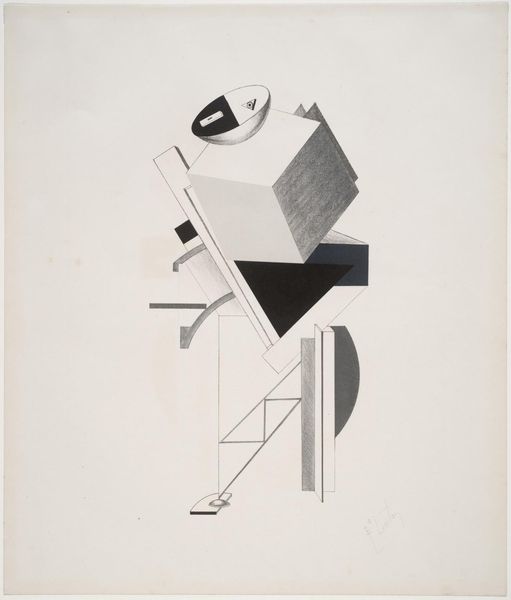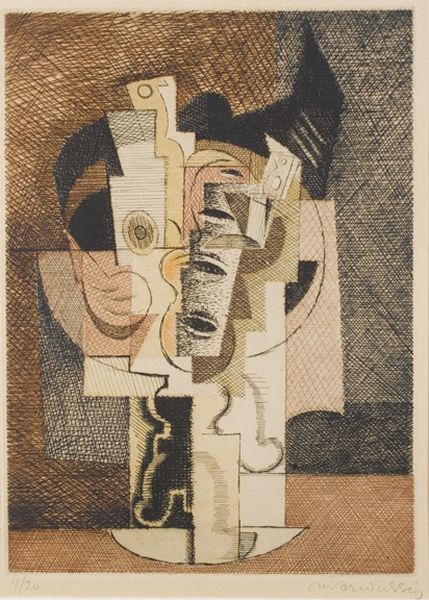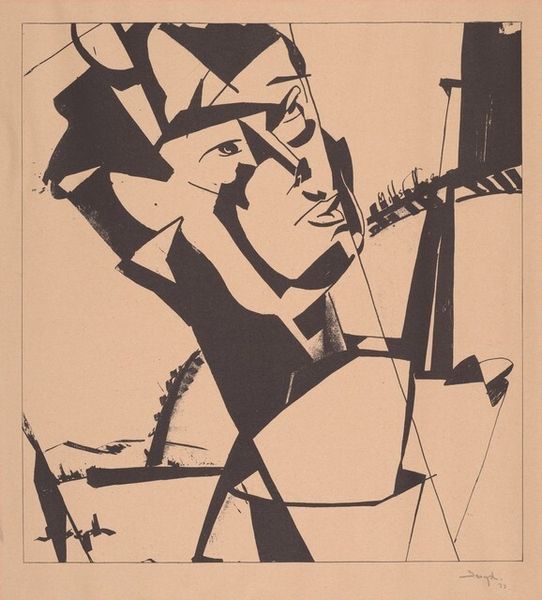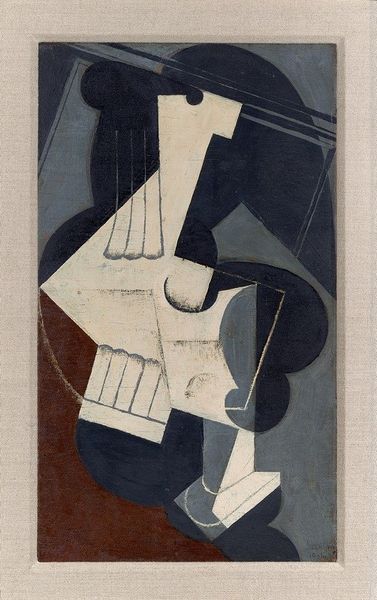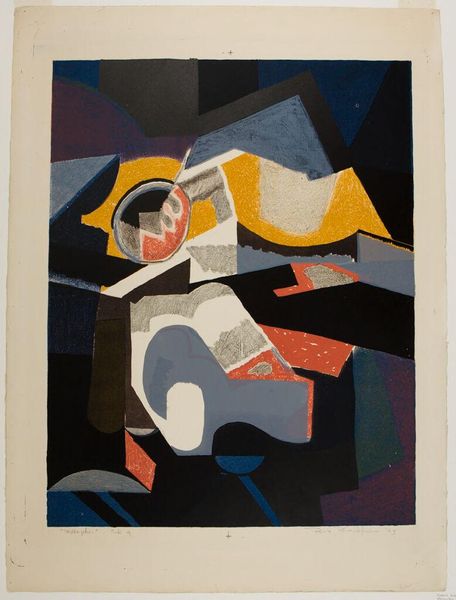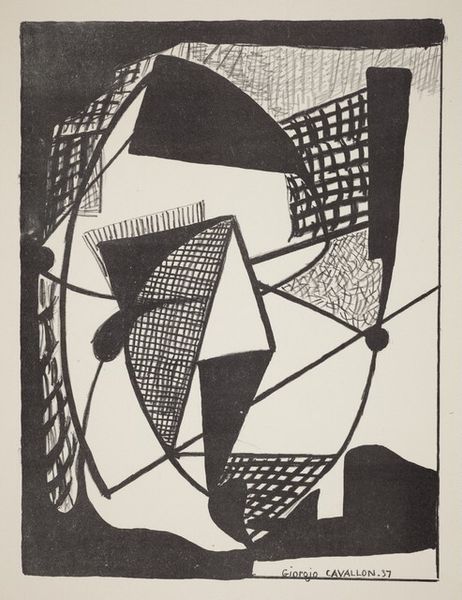
#
cubism
# print
#
caricature
#
geometric
#
line
Copyright: Public domain US
Curator: This is Henri Laurens’ “Composition,” a print created in 1916. It’s an intriguing example of early Cubist printmaking. Editor: Intriguing is one word for it. Stark. Angular. There's a coolness to it—reserved, almost mathematical. Curator: The choice of printmaking as a medium during that period is very telling, particularly given the upheaval of World War One. This wasn't just about art for art's sake. Producing prints allowed for wider circulation. Cubism could reach a broader audience. Editor: While it's true that printmaking allows for reproducibility, look at how the line defines the forms! See how each shape interlocks. This line serves not just to define the forms, but also to imply planes of depth on a shallow surface. Curator: Absolutely. Consider also the materials themselves. Wartime rationing would have greatly influenced his supplies. The neutral palette likely wasn't just an aesthetic choice but a result of the limited range of pigments accessible at the time. How this limits Laurens as a printmaker says more about Cubism’s production value during this era than some formal attempt. Editor: The restricted palette strengthens its structural qualities. There’s no colour distraction, allowing your eye to decode each shape and shadow separately. The stippling too brings to question negative versus positive space; our gaze is invited to look behind. Curator: Right, and those geometric shapes evoke machinery, perhaps even weaponry, albeit in an abstract form. Considering the social context, Laurens was working during a time when machines were transforming warfare—a stark change in human production in and of itself. This print, while visually static, vibrates with a certain tension representative of this. Editor: Yes, and the careful placement of line, light and dark enhances the underlying geometry. The work transforms from something potentially destructive into an exercise of seeing forms intersect as one totality, and yet the individual elements remain distinctly present. Curator: Examining the piece from both material and formal angles illuminates this artist's intention to participate in the larger social conversation of his time. Editor: It provides an aesthetic harmony within geometric, contrasting shapes, which transcends the historical context. It continues to beguile and provoke purely because of its form and composition.
Comments
No comments
Be the first to comment and join the conversation on the ultimate creative platform.

